-
Car Reviews
- All reviews
- Midsize SUVs
- Small cars
- Utes
- Small SUVs
- Large SUVs
- Large cars
- Sports SUVs
- Sports cars
- Vans
Latest reviews
- Car News
-
Car Comparisons
Latest comparisons
- Chasing Deals
The coupe-hatchback spin on Volvo’s popular XC40 proves to be another solid step towards the Swedish marque’s plan to be electric-only by 2030
Fully charged, a bolt of lightning, a shock to the system: there are many cheesy puns to describe how electrification has invigorated Volvo’s appeal with buyers.
As Volvo Australia is keen to point out at the local launch of its C40 Recharge Pure Electric, the coupe twin to its dedicated BEV debut in the current XC40 Recharge Pure Electric, it’s the only marque sold in Oz currently offering electrification range-wide in every internal combustion variant.
But pure EV is where it’s at for the Swedish carmaker, or at least will be globally by 2030 if promises are kept. And while petrol-electric hybridisation of old favourites has yielded some steady sales growth for Volvo Australia’s wider stable, it’s the XC40 EV – for simplicity – small SUV that’s proven the hot ticket, complete with lengthy weight times for eager expectant owners.
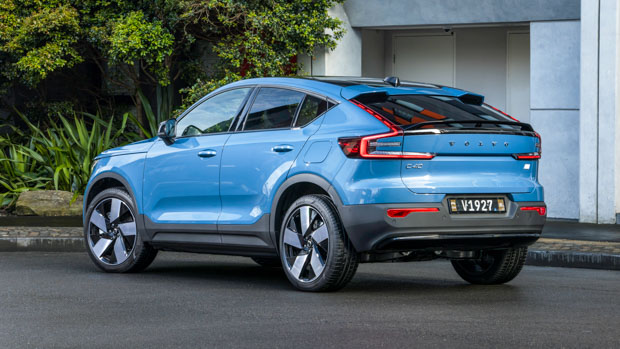
The new C40, electric-only and essentially its related SUV EV twin in swoopy coupe-crossover guise, should help line the showrooms and quench newfound appetites for this new dawn of fully electric Volvos. Or at least should do if it lands with a pleasing balance of goodness, solid enough EV credentials and at a nice enough price.
Two versions of the C40 – a single-motor EV with front-wheel drive, or a dual-motor EV with all-wheel drive – are offered at launch. While, like XC40, the C40 is based off the Compact Modular Architecture platform shared with XC40 and Polestar 2, the absence of a choice of hybrid powertrain makes it the first model in Volvo’s history to be designed as electric only.
The lower-grade version, called P6 in some Volvo literature, plies 170kW and 330Nm from its single-motor, front-driven powertrain and kicks the two-tier range off at $74,990 list. It fits a 69kWh lithium-ion battery, is quicker to charge at around 32 minutes from 10 to 80 percent, and promises a longer range of 434km WTLP. The caveat, of course, is slower if quite respectable 7.4-second 0-100km/h performance.
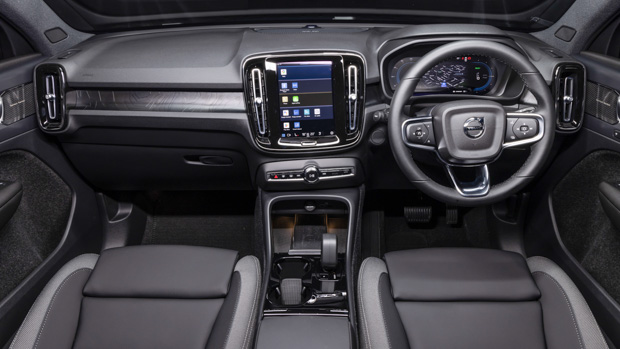
The higher-grade P8 swings a larger 300kW/600Nm stick thanks to dual motors, and plummets acceleration times to 4.7 seconds of genuine, if not necessarily scintillating, performance.
Range for the flagship P8 is down slightly against the P6, to 420km WLTP, while recharging times are up – its best charge time claim being 40 minutes with 150kW DC rapid charging. The dual-motor version fronts up at $82,490 list.
Features and spec wise, there’s a lot of commonality between two variants. Model-wide fitment includes portrait-style 9.0-inch Google-based multimedia, Apple CarPlay and Android Auto, digital instrumentation, electric front seats with two-row seat heating, a panoramic glass roof, two-zone climate control, inductive phone charging and a hands-free powered tailgate.
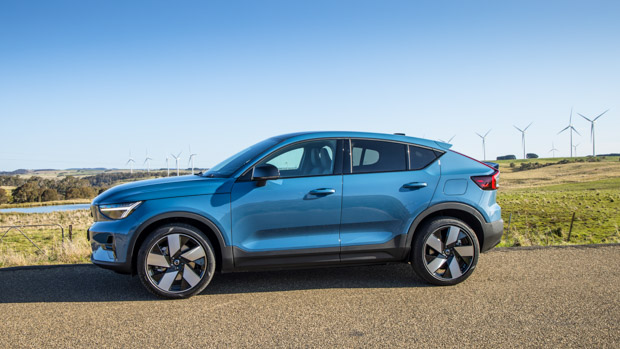
While the base single-motor version fits 19-inch wheels, cloth trim and front and rear parking cameras, the dual-motor version sits on 20s, brings partial faux-leather trim and adds a 360-degree camera system and premium Harman-Kardon sound.
While both version we on hand to sample at the local launch program in South Australia, we favoured the entry single-motor version for the lion’s share of the drive program as perhaps a better indicator of C40’s potential for range, consumption, ride comfort and, wrapped up neatly, value for money.
Between the stop-start crawl of inner-city Adelaide to the sweeping hotmix playland that is the nearby Adelaide Hills, the single-motor C40 clearly demonstrates the breadth of talent sensible EV normality should.
The C40 P6 is not fiery, and it doesn’t ooze driver engagement or promise sporty purpose. But, instead, the low-powered crossover coupe brings a cosseting and fuss-free experience that’s both highly capable and downright relaxing.
With measured progress, its power delivery is rounded and measured. There are no drive modes, per say, so no manic off-the-mark theatrics at the push of a button, though the C40’s character doesn’t really warranty as much.
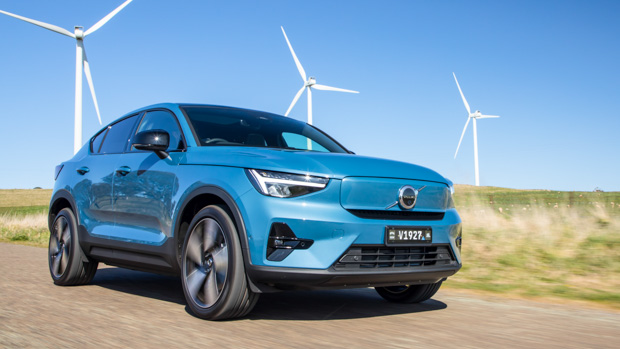
The one mode you do get is amply toey. Dig in and the front wheels will scrabble faintly uphill and it does feel as if there’s more on tap that the 170kW and 330Nm figures suggest.
In fact, there’s barely any drivability adjustment at all on offer, as refreshing or frustrating as that may be. The driver can control steering feel (light or less so) and brake regeneration, the latter in two modes best described as a) an aggressive one-pedal setting and b) pretty much no lift-off regeneration at all.
The one-pedal mode works a treat around town and, stretching the C40’s legs across the twisty hills, you can get a decent hustle on without really ever having to lift your foot off the right pedal. Engaging, yes, but some will find this mode fatiguing during long stints in the saddle.
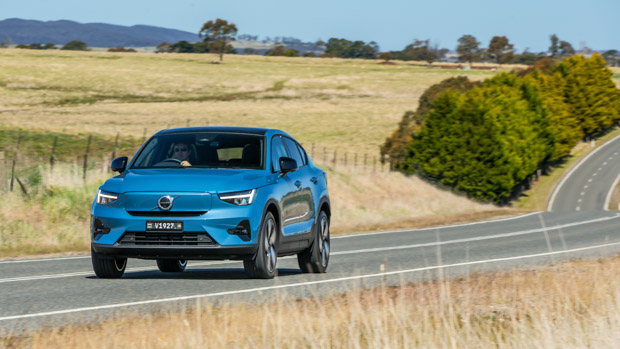
Low regeneration is more pleasant, and more combustion-like – and in this sailing mode, thankfully the take-up of the brake system is naturally progressive rather than that wooden touchiness you do find with some EVs.
But the downside is that whether regen is on or off, the C40 lacks the multimode flexibility of, say, Kia’s EV6. And that you have to dig deep into the Volvo’s submenus to adjust the regen level is a pain.
As is the trend with modern EVs, there’s no on/off button: you climb into the C40, it springs to life, you tap the transmission selector toggle switch to drive, and off you go.
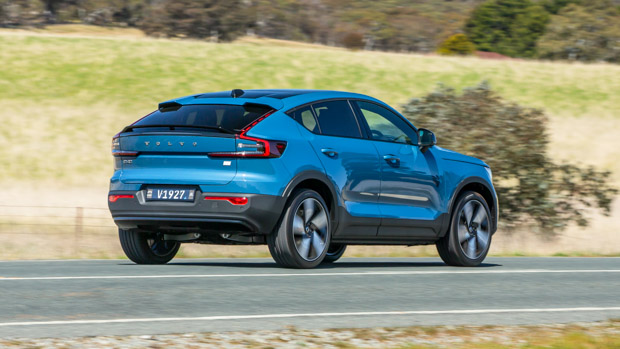
No matter what sort of driving you engage with or how you decide to drive it, the C40 maintains a quiet and polite dignity and without much of a soundtrack, though not to any fault.
It doesn’t feel quite lithe on its rubber and while its circa-two-tonne (2001kg tare) weight is portly for a small crossover, it’s the sort of mass that contemporary electric torque dispatches without the faintest sweat.
Steering is…fine: it is direct if somewhat inert and without much genuine connection to cornering velocity, but the spring in the chassis’ dynamic step makes for quite a fun little punt should you wish to push on across roads as baiting as those around South Australia’s wine region.
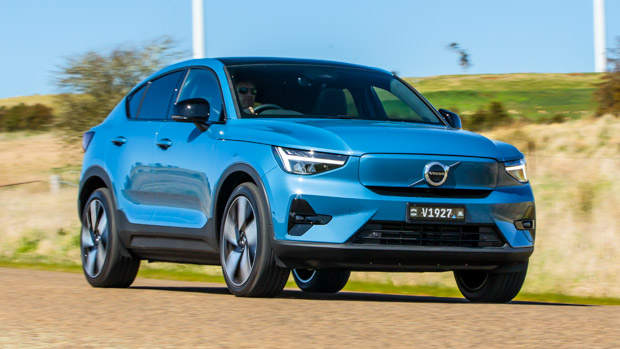
The suspension damping is middling and the ride quality is generally quite compliant, particularly carrying speed across lumpy backroad surfaces. But the polish does tarnish itself at low speed across particularly crook roads, a little jarring here and with some noticeable suspension noise there. For a sense of on-road solidity, the C40 has room for improvement.
Driven moderately though not economically, and after 110 kilometres of driving, the C40’s on-board computer suggested a best-case range of just under 400kms. Decent, but a bit short of its maker’s claim. But the eye-opener was the displayed consumption of an average of 20.4kWh/100km for the trip. Yikes.
Of course, launch programs bring adverse – and generally quick – driving conditions: we’ll get a more accurate indication once the C40 hits the Chasing Cars garage.
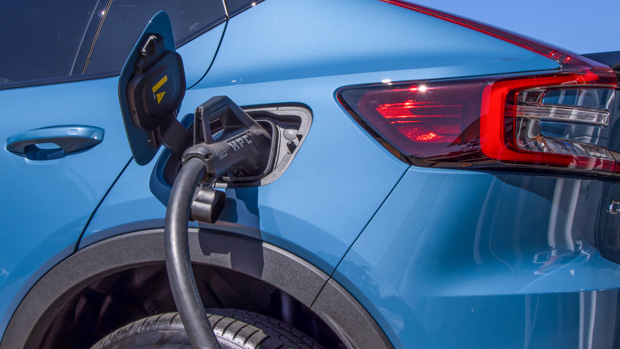
The charging cap of 150kW (DC) also brings longer charge times than some EV rivals that theoretically offer as much as 350kW – such as the Hyundai Ioniq 5. The extra minutes invested in recharging might only irk some owners some of the time, but it’s a key limitation not without consideration.
Is Volvo, is safe, right? Or so is suggested by the suite of active safety features fitted to C40 that includes neat features such as blind spot collision avoidance (via steering) and reverse AEB as a function or rear-cross traffic alert, together with the usual and expected array of safety assistance systems.
ANCAP thinks so, as both variants carry a newly assessed (Oct 2022) five-star rating.
Volvo has clearly eschewed temptation for a hard stylistic departure from its interior design convention with its first ever dedicated EV model.
The look and vibe is a whole lot like the XC40 EV, which is quite similar to the hybrid version…and most other models in the current Volvo fold.
What is that exactly? A generally clean and minimal approach, with minimal switchgear save for some obvious essentials, and a pleasing aesthetic that is, well, oh-so-Swedish and not at all like cabins offered by German, Korean or indeed American EV makers.
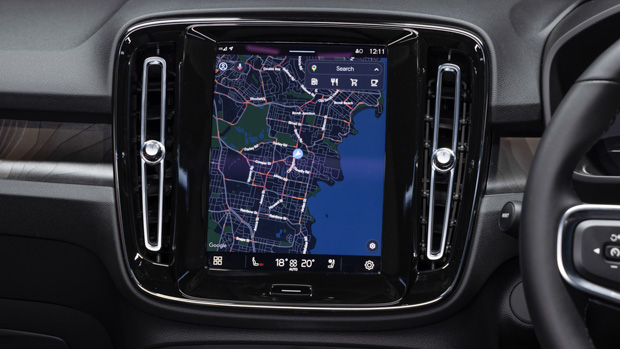
Portrait-style infotainment containing much of the vehicle user interface? Check. Wonderful vertical-oval air vents? Check. Those wonderfully ornate, concave-carpeted door cards? Double-check. Quirky map-of-Gothenburg plastic trim inlays across the dash and door and inserts, ala XC40 EV? Well, indeed!
It charms as Volvos do for those who like the cut of its stylistic jib. But against some of its more opulently finished stablemates, the base C40 – and indeed the dual-motor version – does look and feel conspicuously cost conscious in a few too many areas.
The touch points, trim work and details have a real quality about them. But some of the plastics used in clearly visible areas, as well as the grade of fabric seat trim, won’t cause the likes of Audi or Mercedes-Benz to lose much sleep at nighttime. If corners have been cut, it’s here.
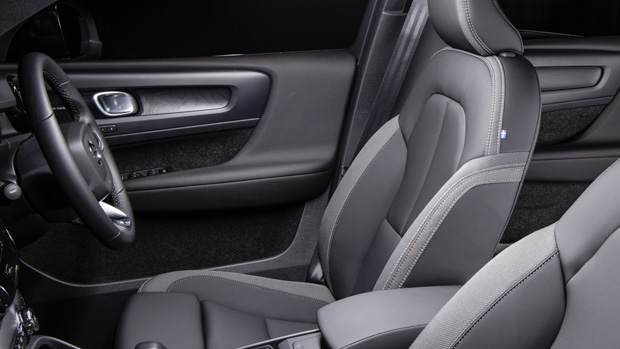
The seats themselves are fine, well cushioned if not quite as shapely as they could be, though the electric adjustment, including lumber, for both front seats are more welcome for fine tuning comfort.
Unsurprisingly, the dual-motor seat trim is more sumptuous and welcoming, completely leather-free, if doing a fine job of replicating its welcoming tactility through synthetic execution.
The sense of spaciousness is decent enough for a small segment offering, aided mostly by the generous windscreen and side glass area as well as the lightness brought about by the huge panoramic fixed glass roof that’s deeply tinted but offers scrim to block sunlight. The jury is out how hot the cabin might get during midsummer days.
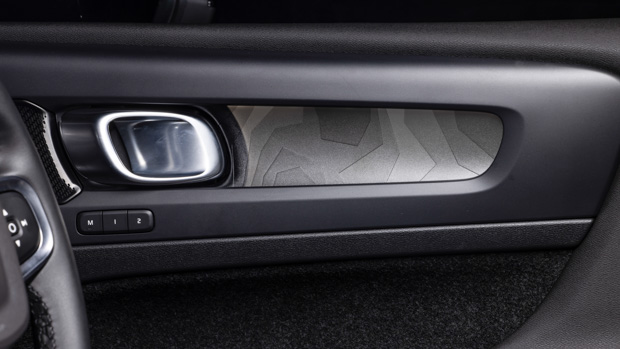
Much like the general cabin format, there’s not much departure – no weird EV fanciness – to the digital displays in C40 when compared with Volvo’s regular (hybrid) models.
The central screen is, at nine inches, modest in size, if very accessible and its Android Automotive operating system is logical in its interface and quite pleasing to use. Unlike some recent iterations, it does offer Apple CarPlay connectivity in wired form, even if it almost begrudgingly refused to actually mirror the iPhone’s home screen.
Proprietary Google maps with real-time traffic and auto rerouting, Google Play, voice-controllable Google Assistant, all bundled into a complimentary four-year subscription is a nice dangling carrot, while software updates are available over the air.

Packaging is decent enough. It’s not the roomiest small crossover and, clearly, there’s some compromise to space compared with the more wagon-esque XC40. Rear space is closer to class average than what’s offered in some SUV leading lights. It’s no Ioniq 5 in row two.
That said, once you past the somewhat constrictive rear door apertures, actual head, shoulder and knee is quite good, and the sense of airiness is, again, aided by the vast expanse of ceiling glass.
Despite the sloping roofline, the C4 offers 413 litres of boot space, which is just shy of the 419L quoted for the XC40 EV.
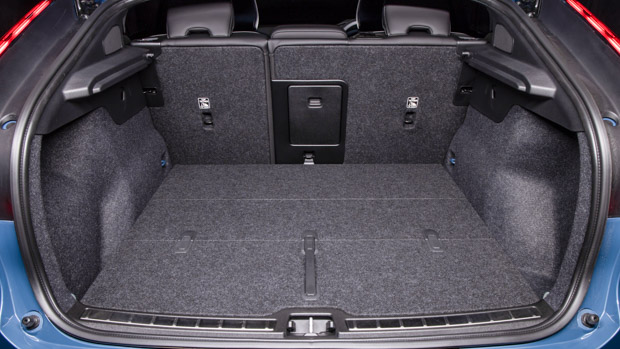
Still, a cursory glance reveals that the former loses out a chunk of available volume under the hatch if you were to load the space to the ceiling. Regardless, the squarely proportioned luggage space is quite practical, offering little in the way of day-to-day compromise against its wagon sibling.
There’s a small compartment under the rear floor that houses the type 2 portable charger, but there is no spare tyre: instead, the C40 relies on an inflator kit.
The C40 is covered by a five-year, unlimited-kilometre warranty, with an eight-year warranty on the high-voltage battery. Also included is eight years of roadside assistance.
Volvo offers a complementary upfront, three-year/100,000km servicing plan. The service intervals are 24 months or 30,000 kilometres, whichever comes first.
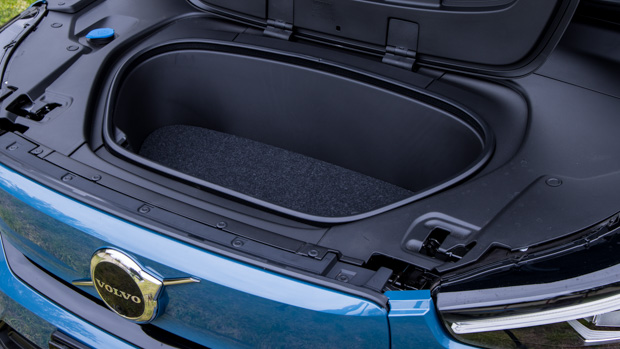
Like the XC40 EV, the C40 is capable of recharging using 150kW DC fast charging. Volvo quotes best-case charging times of 32 minutes (single-motor, 69kWh) and 40 minutes (dual-motor, 78kWh) for the 10 to 80 percent charge at the full 150kW.
Maximum range is claimed at 434 and 430 kilometres WLTP, respectively, for the single- and dual-motor variants. Volvo makes no recharging duration claims for the three-phase wallbox: we discovered in reviews past that the XC40 EV typically takes around eight hours on an 11kW wallbox.
If Volvo’s fully electric foray with XC40 EV seems to have hit the right chord to buyers, the C40 sits oh-so neatly in the wheel tracks offering a very similar experience with little in the way of concession or compromise. In the flesh, it looks pretty damn hot, too, especially in big-wheel dual-motor guise.
As a breed, the C40 doesn’t benchmark EV performance or range claim, but nor does it necessarily set out to do so. Rather, it offers those attracted to Volvo another pure-electric choice that’s indicatively on brand and in genuine character. For that alone, it’s extremely likeable.
The single-motor version does what it needs to do, academically and emotionally, for certain EV owner – and aspiring EV ownership – tastes. And does so at a palatable price.
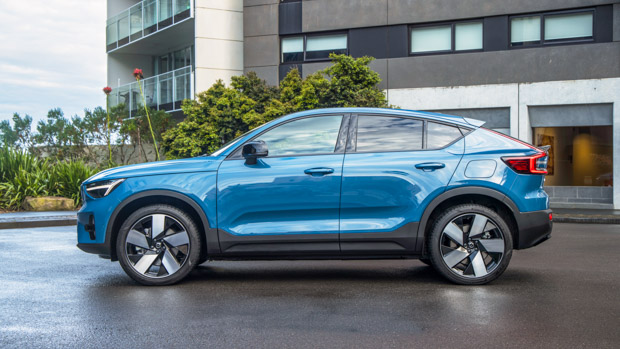
Meanwhile, the dual-motor is clearly more Jekyll and Hyde and, uncorked, really does make a performance statement as its party trick – as some EVs do – but this really is a side hustle to its main game of returning a quality, comfy and fuss-free EV experience.
Still, the C40 isn’t perfect and its trick bag isn’t quite as deep as some other EVs asking for similar money. That said, it’s the ideal foil for those EV adopters who want a bit of the flair but could care less about wearing electro-sensibilities overtly and ostentatiously.
Variant tested RECHARGE TWIN PURE ELECTRIC
Key specs (as tested)
About Chasing cars
Chasing Cars reviews are 100% independent.
Because we are powered by Budget Direct Insurance, we don’t receive advertising or sales revenue from car manufacturers.
We’re truly independent – giving you Australia’s best car reviews.
The estimate provided does not take into account your personal circumstances but is intended to give a general indication of the cost of insurance, in order to obtain a complete quote, please visit www.budgetdirect.com.au. Estimate includes 15%^ online discount.
^Conditions Apply
Budget Direct Insurance arranged by Auto & General Services Pty Ltd ACN 003 617 909(AGS) AFSL 241 411, for and on behalf of the insurer, Auto & General Insurance Company Limited(ABN 42 111 586 353, AFSL 285 571).Because we don’t know your financial needs, we can’t advise you if this insurance will suit you. You should consider your needs and the Product Disclosure Statement before making a decision to buy insurance. Terms and conditions apply.
Indicative quote based on assumptions including postcode , 40 year old male with no offences, licence suspensions or claims in the last 5 years, a NCD Rating 1 and no younger drivers listed. White car, driven up to 10,000kms a year, unfinanced, with no modifications, factory options and/or non-standard accessories, private use only and garaged at night.
^Online Discounts Terms & Conditions
1. Discounts apply to the premium paid for a new Budget Direct Gold Comprehensive Car Insurance, Third Party Property Only or Third Party Property, Fire & Theft Insurance policy initiated online on or after 29 March 2017. Discounts do not apply to optional Roadside Assistance.
2. Discounts do not apply to any renewal offer of insurance.
3. Discounts only apply to the insurance portion of the premium. Discounts are applied before government charges, taxes, levies and fees, including instalment processing fees (as applicable). The full extent of discounts may therefore be impacted.
4. We reserve the right to change the offer without notice.